
Emergency escape lighting provides illumination for the safety of people leaving a location, or attempting to terminate a potentially dangerous process beforehand, in the event of a power failure. It is part of the fire safety provision of a building and a requirement of The Regulatory Reform (Fire Safety) Order 2005. The maintenance and upkeep of the light fittings and components cannot be ignored.
LED emergency lighting: the way ahead?
With the focus increasingly on protecting the environment as well as energy and cost saving, the Light Emitting Diode (LED) is becoming an increasingly popular choice of light source for emergency lighting luminaires.
In addition, the government is currently offering a financial incentive to switch to low energy products: the Enhanced Capital Allowance (ECA) scheme enables businesses to claim a 100% first year capital allowance on investments in certain energy saving equipment, against the taxable profits of the period of investment.
The UK’s foremost authority of emergency lighting, the Industry Committee for Emergency Lighting (ICEL) provides third party accreditation for branded products and components.
As distributors of leading brand manufacturers, we hold large stocks of multi-branded products and have the in-house expertise to provide technical advice to assist you.
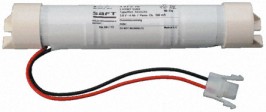
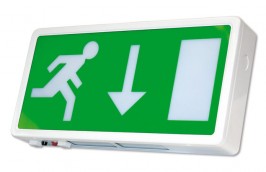
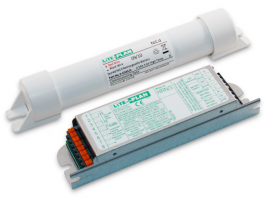

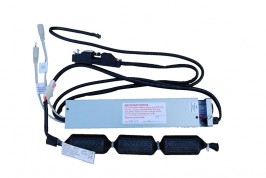
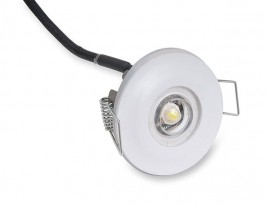
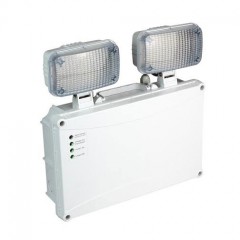
Systems or individual lighting units (luminaires) are designed to operate for durations of between one and three hours after the mains power supply fails. In practice, the three-hour design is the most popular and can help with maintaining limited continued use of the premises during a power failure, or during evacuation if an emergency.
An emergency lighting installation may be either a central standby source such as a bank of lead acid batteries and control gear/chargers supplying slave fittings throughout the building, or may be constructed using self-contained emergency fittings which incorporate the lamp, battery, charger and control equipment.
Another popular method for lighting designers, architects and contractors are battery backup ballasts that install within or adjacent to existing lighting fixtures. Upon sensing power loss, the ballasts switch into emergency mode turning the existing lighting into emergency lighting without the need of wiring separate circuits or external wall mounts.
Self-contained emergency lighting fittings may operate in "Maintained" mode (illuminated all the time or controlled by a switch) or "Non-Maintained" mode (illuminated only when the normal supply fails).
Codes of practice for remote mounted emergency lighting generally mandate that wiring from the central power source to emergency luminaires be kept segregated from other wiring, and constructed in fire resistant cabling and wiring systems.
Codes of practice lay down minimum illumination levels in escape routes and open areas. Codes of practice also lay down requirements governing siting of emergency lighting fittings, for example the UK code of practice, BS5266, specifies that a fitting must be within 2 metres (6 ft. 7 in) horizontal distance of a fire alarm call point or location for fire-fighting appliances.
Detailed guidance should be sought on this topic, some useful resources are:
Maintenance and testing of emergency escape lighting
Government guidelines state that all emergency escape lighting systems should be regularly tested and properly maintained to an appropriate standard (i.e. BS 5266 – Code of practice for the emergency lighting of premises). This testing has traditionally been undertaken manually although emergency luminaires are available with a self-test facility.
Testing would usually include the following:
Particular care needs to be taken following a full discharge test. Batteries typically take 24 hours to re-charge and the premises should not be re-occupied until the emergency lighting system is fully functioning, unless alternative arrangements have been made.
It is best practice to keep a record of all tests in the fire safety logbook.
Free next day delivery nationwide, ex stock.
Same day delivery available on request.
No minimum quantity.
If we don’t stock it…we have the know-how to get it for you…fast!
We are always happy to see you in person. If you need something right away, just pop in.
Delivery direct to site, any location nationwide (Proof of delivery available on request).
Recycling – WEEE certification – Collection service or drop off in person, by arrangement.